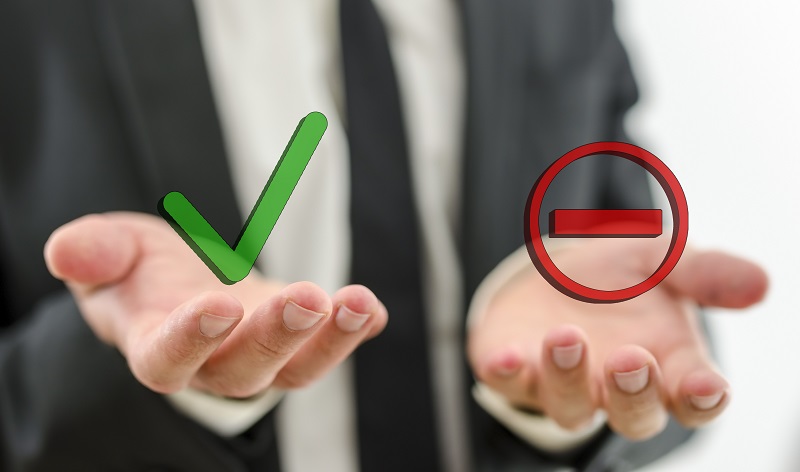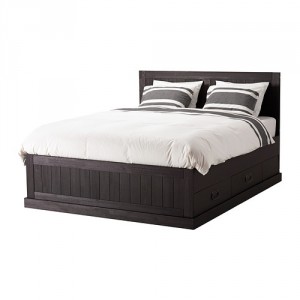… the power lies in the easy swing of the gate!

Regardless of what your company sells as an end product to a customer, that customer has ultimately “bought” many little things along the way before making that final “cash” transaction. The little things are never paid for in hard dollars, but nevertheless must be “purchased” in the mind of that customer before they can proceed to the FINAL sales transaction. If you understand this concept, you have understood one of the most fundamental aspects of sales & marketing.
A Decision Point Map (also known as a consumption chain) is like a series of gates. These gates can do one of three things along the road to the final sales transaction:
- Swing wide open, and let you through
- Swing a little open, allowing you to scrape by, or
- Stay shut, thus abruptly ending the process.
Here are some typical Decision Point gates in a purchase cycle:
- Awareness of Need/Pain
- Search for a Solution
- Selection
- Purchase
- Payment
- Delivery
- Installation
- Usage
- Servicing, Repairs, & Returns
- Disposal
All customers go through this decision point process, either consciously or unconsciously, or in post-purchase wish they had gone through some gates with more care (i.e. they experience post-purchase regret). The secret to extracting power from this process is to ease and guide the purchaser through each of these Decision Point Gates, making them easier to travel.
Here’s an example. What if you wanted to purchase a new bed?
Sample Decision Points in the Purchase of a New Bed
 Gate 1 – Awareness of Need/Pain – The existing bed starts creaking, or is lumpy, or becomes too small, or doesn’t fit the décor of the new bedroom, or two dozen other annoyances. Most of this need/pain recognition starts out slowly and then increases in intensity. In other words, the pain increases over a period of time. Most purchase decisions do not involve the customer jumping to the conclusion that they need an immediate solution. It is usually a gradual process, over time.
Gate 1 – Awareness of Need/Pain – The existing bed starts creaking, or is lumpy, or becomes too small, or doesn’t fit the décor of the new bedroom, or two dozen other annoyances. Most of this need/pain recognition starts out slowly and then increases in intensity. In other words, the pain increases over a period of time. Most purchase decisions do not involve the customer jumping to the conclusion that they need an immediate solution. It is usually a gradual process, over time.
Gate 2 – Search for a Solution – Once there is a recognition of the pain, although it is usually only a small annoyance at the time, the search process begins. But slowly and at a low level. At this gate, most people “start” seeing and paying attention to bed advertisements, prices, and the difference between coil-spring and visco-elastic mattresses, and start adding to their mental roster a list of retailers where they could purchase from. At some point, there is a trigger event that propels the customer into action, and they commit to buying the bed within a certain time. The trigger event may be as simple as waking up again with a bad back, or the realization that you really do need a new bed in the guest room because your favourite aunt is coming to visit.
Gate 3 – Selection & Purchase – There are two selection events in the purchase of a bed. The retailer you will buy it from, and the brand/model you will select. Remember that mental roster you started in gate 2? At the top of the list may be the big furniture stores and specialty “bed only” retailers that dominate the advertising scene. The retailers with the best shot at being on the shopping consideration list will be those who have implanted themselves in the customer’s mind BEFORE this current gate. Retailers who are just entering the customer’s awareness in gate 3 still have a good shot, but are entering the game just in the nick of time.
In the mind of the customer, there are two decisions to be made at this moment. The first is the kind of bed they want, and they may have an idea on the manufacturer or brand as well. Some examples would be a king-sized sleigh bed with a Tempur-Pedic mattress, or a queen-sized Sealy Posturepedic. At this point, they may only know that they need a queen sized mattress, but have no clue about the DIFFERENCES between manufacturers, or coil-spring vs. foam. The 2nd decision is which retailer they will buy the bed from. The decision criteria evaluated include distance to store, how many locations they have, name recognition, delivery services, etc.
In my city, there are several big-box retailers where you can buy any number and style of beds, including specialty bed-only retailers. But there is only 1 place in town where you can buy the same brand bed that the Queen of England sleeps on, at a very royal price. Depending on what you want, you may choose to visit all the retailers on your mental roster or just 1. You may choose to try all the various styles of mattresses, or just a couple. It all depends on the level of risk you perceive in the purchase.
When I purchased a bed for the spare bedroom, I went to 1 specialty retailer, looked at 3 beds, and completed the purchase in 20 minutes. It wasn’t a difficult decision, and the overall risk of making the wrong decision was low because of the small dollars involved, the national brand of the retailer, and the warranty provided. If this was a bed for our master bedroom, the one we sleep on every night, the decision would have been a much more lengthy process.
 Gate 4 – Payment – Can you imagine going through the steps above, wanting to buy the bed, and then realizing that the retailer only took cash? Or just American Express? Having a variety of payment options at this gate is imperative.
Gate 4 – Payment – Can you imagine going through the steps above, wanting to buy the bed, and then realizing that the retailer only took cash? Or just American Express? Having a variety of payment options at this gate is imperative.
Gate 5 – Delivery & Disposal – Some of the most dangerous objections are those that are unstated. Most bed retailers know that at this gate most customers are worried about 2 things: How to get the bed delivered to the house, and what do they do with their old one. Smart retailers now offer free delivery of the new bed AND free removal of the old bed.
Gate 6 – Installation – Beyond delivery, our retailer came in and set up the new bed. It was a welcome service, simple, and removed all the UNSTATED objections I had about how to set up the box spring, mattress, and frame.
Gate 7 – Servicing, Repairs, & Returns – On a risk reduction basis, buying a recognized brand of bed from a recognized brand of retailer greatly alleviate our risk of purchase. We knew that if anything went wrong, either the retailer or the manufacturer would make it right.
Now, here’s the frightening part.
Now, here’s the frightening part. If ANY of these gates fails to open for the customer if only in their mind, they ABANDON THE ENTIRE SALES PROCESS.
Here’s another example.
The Mom & Pop Pizza Shop
 This story dramatically underscores the need to understand the customer’s decision points. Remember, if the customer can’t get through the gate, they simply, quietly, go away. Master marketer Jeff Slutsky retells a tale about an interesting dilemma that a mom and pop pizza operation had in a small city when the big boys (Domino’s, Pizza Hut, etc.) decided to invade.
This story dramatically underscores the need to understand the customer’s decision points. Remember, if the customer can’t get through the gate, they simply, quietly, go away. Master marketer Jeff Slutsky retells a tale about an interesting dilemma that a mom and pop pizza operation had in a small city when the big boys (Domino’s, Pizza Hut, etc.) decided to invade.
This was the 1980’s, and before the big boys arrived, Mom & Pop Pizza was doing a booming business. This little company really understood the marketing mix. When all of their other competitors were running small ads, they were running big ones. When the competition was using one colour ads, they were using two colour.
The most profitable side of their pizza business was the takeout/delivery service. At the time (the ’80s), most people didn’t rely on memorizing their favourite pizza place’s menu. Instead, they went to the yellow pages and looked up the phone number and called. So when the big boys came to town, all the old tactics that Mom & Pop Pizza were using couldn’t carry enough weight to counter the force of the big boy’s advertising, especially the critical yellow pages advertising. The big boys took out the biggest yellow page ads they could, and overnight Mom & Pop Pizza’s take-out business disappeared.
The obvious thing to do was to re-group and mount another charge, but this required resources and more importantly time. There must be a way to punch the big boy’s to wind them long enough for Mom & Pop Pizza to charge forward. What was the solution? You certainly couldn’t throw any more money at the problem! How do you outspend a multi-national conglomerate? The yellow pages advertising was already published, and it would take another twelve months before you could re-deploy your ad within it. What to do? What to do?
Solution: Mount a promotion! A special promotion in which they ran the following ad:
Bring us the MULTI-NATIONAL PIZZA COMPANY advertisement from the yellow pages, and your second pizza is on the house.
Needless to say, every phone booth, bar, and home yellow pages was shredded of its MULTI-NATIONAL PIZZA COMPANY advertising, and this gave Mom & Pop Pizza enough time to re-group.
You can decide on this advertising campaign’s ethics, … but ya gotta admit it’s creative!
![]()
